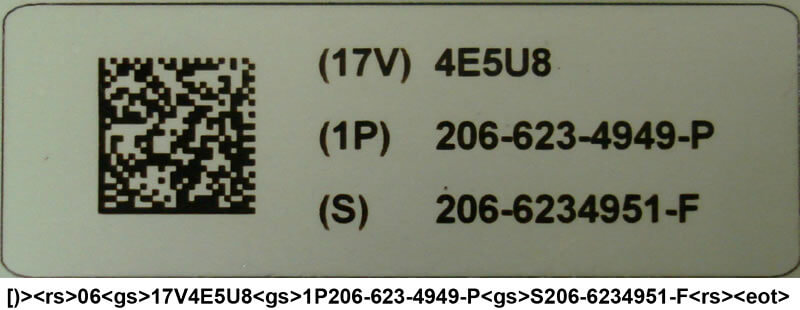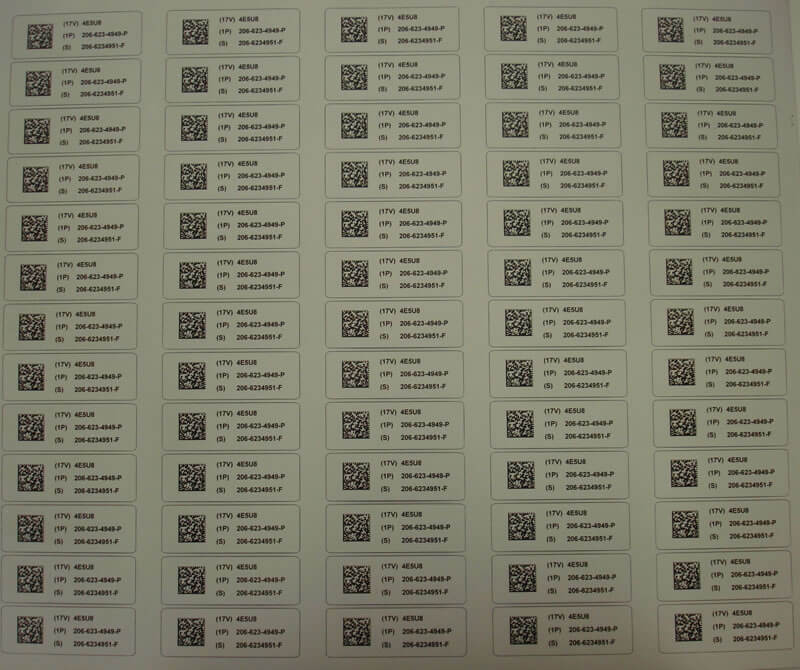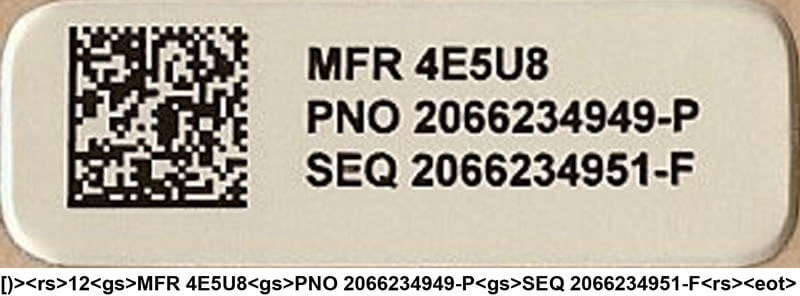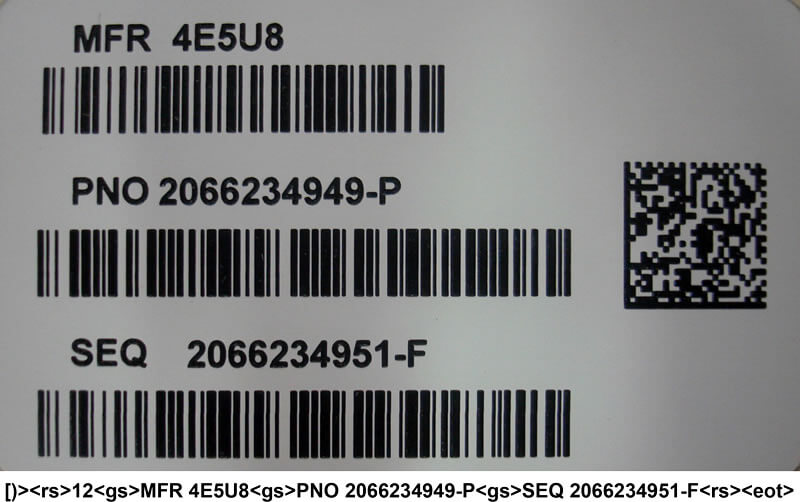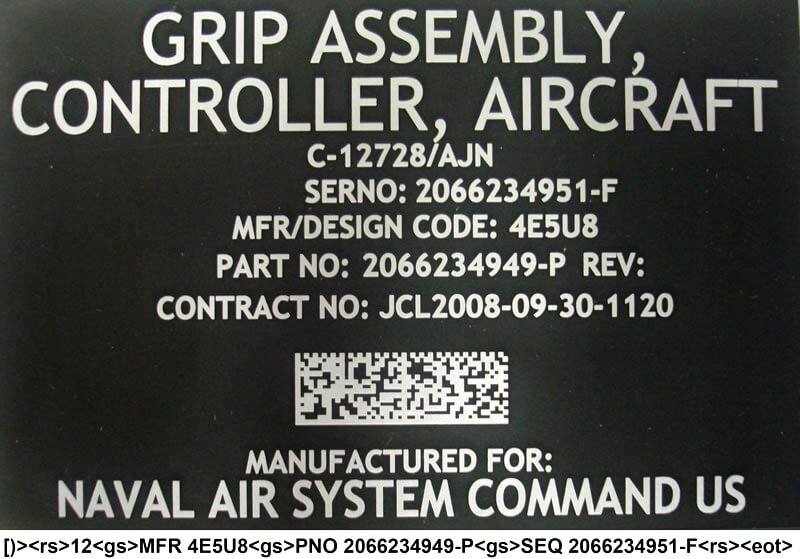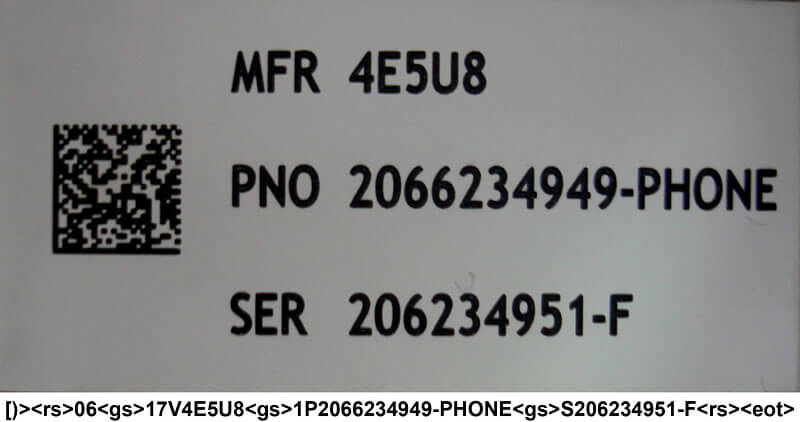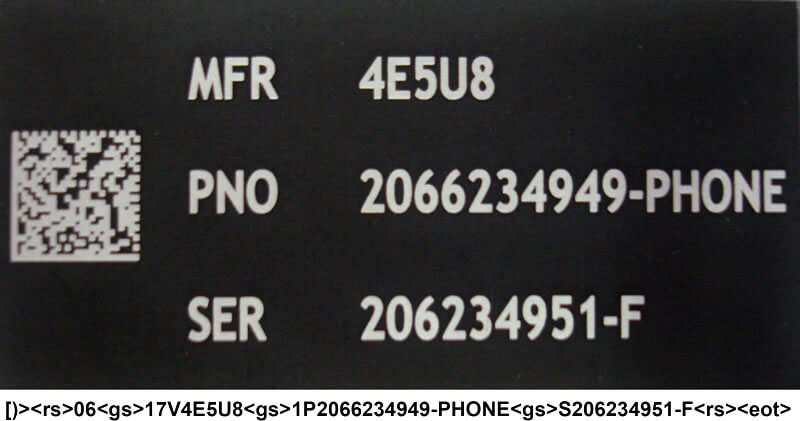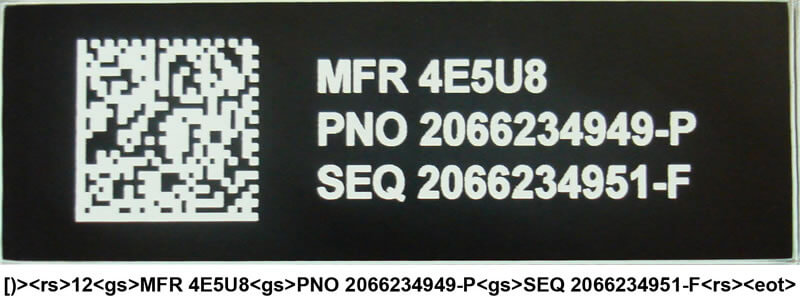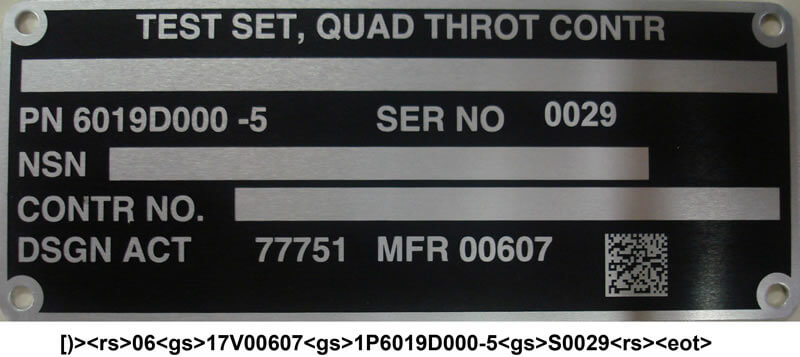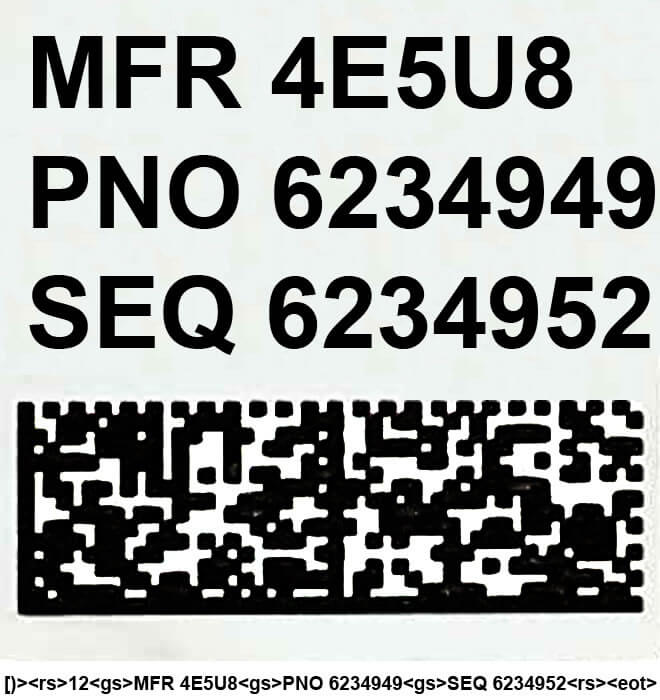MIL STD 130 Construct 2 IUID Labels
A Construct 2 layout includes the CAGE code, serial number, and part number in one or two Data Matrices. Typically, items are serialized at the part number level.
Following are labels in a variety of materials and layouts that meet Military Standard 130 Construct 2 requirements. There are many other layout options. Although most of these have a black background with white text, you may choose any Pantone® color for your label or nameplate text and background. Contact us if you have questions or would like guidance. Visit IUID Construct 1 to learn more about another MIL-STD-130 label, nameplate and tag data layout option.
Click a photo to see a larger version of the label plus details about how the data is laid out on the label.
This label is made using Ripped Sheets, a polyester material that is very tear resistant. In addition to the Data element Identifiers (DI’s) formatted 2D machine readable code, each data element is contained in a separate linear barcode. This is an excellent example of how much more data a 2D code can encode than can a linear barcode.
Contact us today to order and to talk with a government compliance label and nameplate specialist.


